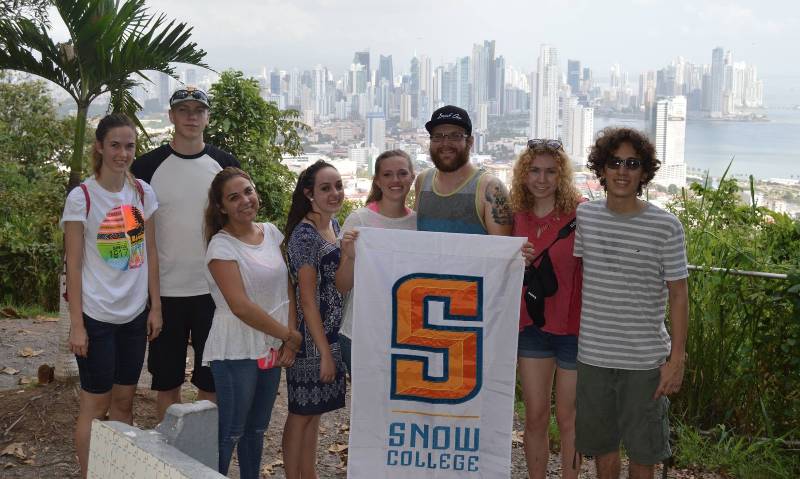Faculty Led Programs
Faculty led programs are trips with Snow College faculty members to other countries. Usually there are educational components to the trip, and sometimes there is Snow College credit offered for the class.
For example, Snow College faculty took students to Taiwan to learn how to teach English as a Second Language. The students received TESL credits for pre-trip activities, a project to complete during the trip, and a reflective project upon completion of the trip. Another example of a faculty led trip was to Colombia for a Global Inquiry and Service Learning class.
You can discover our current Faculty-Led Short Term Programs and review our Study Abroad Resources for additional support before going abroad. In addition, the information below will help Snow College faculty and students as they consider planning a class trip abroad.

Health and Safety
- Browse through the information on the U.S.A. State Department travel page.
- Learn which immunizations you might need, and check the Center for Disease Control.
- Health and Travel Insurance - If you're traveling alone, we can advise you on insurance plans to consider. If you are traveling with a group, such as on a Faculty-Led Study Abroad Program, you might enroll on Atlas group travel insurance, which has been a reliable provider for students and staff on past trips. Whatever insurance is purchased, it should include medical, emergency, and repatriation.
- You are advised to carry proof of medical insurance with you and retain any forms and receipts necessary for reimbursement from your insurance provider.
- It's mandatory that you register with the U.S. STEP program. This connects you as an international traveler with the embassy in the country where you plan to travel in case they need to be contacted.
- Emergency plan - Each trip must have a plan in case of emergencies. Check with the Center for Global Engagement for examples.
- Before you travel, you must also review, print and sign the Liability Form.
- We suggest that all students traveling abroad should obtain a physical health examination and complete the Participant Vital Data form before traveling. Unexpected health costs will be your own responsibility.
- Bring any necessary medications and medical supplies to cover your entire stay abroad; carry prescriptions in original and clearly marked containers.
Faculty Resources
As you begin planning a trip abroad for your students, please refer to the following resources:
- International Travel Handbook
- Participant Vital Data and Emergency Information Form
- Release and Waiver of Liability
For student resources such as travel documents, a packing list, health and safety information, please see our Study Abroad Resources page.
Finances and Credits
Payment plans or deposits:
- Each faculty leader should consult the CGE about possibilities for funding. Additionally, Snow College has student travel money available. The office of the Vice President of Academic Affairs coordinates the travel budget applications, which are due twice per year and awarded by competition. Contact amy.noblett@snow.edu for more information.
Academic credit:
- Classes or trips with academic merit, justification, and rigor can qualify for elective credit through the curriculum committee. Contact the CGE for more information about class credits for study abroad.